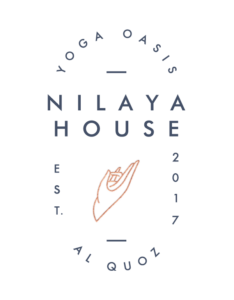Developing focus and concentration can be a little tricky for children. We all know little ones have limited attention spans. Let’s face it, most adults today can barely focus for more than a few minutes because of how we are consumed with external stimuli. A rapid increase in the technology around us has caused us (and our children) to be easily distracted. When there are just so many activities/movies/shows / social events to choose from – how can we just focus on one?
In typical school classrooms, teachers are also working to develop focus. I suppose when we were younger in school, we were taught the lesson not taught how to focus. If you didn’t pay attention or had trouble concentrating, that was your own fault. Nowadays though schools work in conjunction with teachers, who in turn provide lesson plans and classroom techniques to help children develop some focus, so they can pay attention to and actually understand and absorb what is being taught to them.
Likewise, yoga for children also works on developing focus and concentration levels; to help little ones go through school and life with increased awareness and attentiveness.
In a kids’ yoga class, this is communicated mainly in two different ways. The first being the physical postures and the second are the various breathing exercises and meditation. Both things though, are made interesting and fun! Teaching the importance of focus to a group of six-year-olds can quickly go south, especially if we only spew out adult language and boring (and sometimes too easy) movements.
The best part though is that most children are always willing to challenge themselves and try – and then try some more – and then try again. This innate ability is molded in a positive way, by getting them to try to focus, perhaps in a balancing posture. To stand on one leg with your arms extended overhead requires a fair amount of focus. You need to keep your gaze fixed, continue to breathe, keep the standing leg strong and steady and also maintain your centre of gravity. Doing all of this simultaneously can be a little overwhelming. But in a kid’s yoga class, everything is broken down into bite-sized concepts.
The first few times, children are asked to make sure they are breathing throughout the pose – even if they fall out (falling and standing up is always encouraged. Resilience!) In the next few lessons, the concept of keeping a fixed gaze is introduced, and so on and so forth. After a few classes and several attempts of holding steady to the count of five children manage to sum up enough focus (and strength) to hold their tree pose tall and strong.
The glee from achieving this helps uplift their moods and also increase self-confidence and self-esteem. This helps them understand, that with a little bit of effort and focus, they are able to progress and achieve.
Balancing postures are just an example of how the focus is developed through yoga. Movement through all the limbs is also taught, where children are encouraged to move their arms and legs in different directions simultaneously. There are countless postures in yoga and each one can be modified or made more complex and each new posture brings around a new sense of excitement for children, as well as a new opportunity to grow focus.
Additionally, in every kid’s yoga class, the importance of breathing deeply plays a vital role and thus apart from the physical aspects of yoga, one of the most important ways that help builds focus and concentration is through taking deep meaningful breaths. Breaths can be deep and steady only if one concentrates on elongating their inhales and exhales and remain steady. The option of closing the eyes, to increase concentration is also encouraged.
A lesson always begins and ends with rounds of deep breaths and even as little ones lay in savasana, they focus only on their breath to lay steady. This is encouraged by placing small toys or colourful balls on their belly. This way children can actually see their breaths rise and fall as they lay on their back and do their best to keep the object steady and safe.
Over time, as children develop focus and the ability to concentrate for longer periods of time the postures are progressed and breathing time is also increased.


